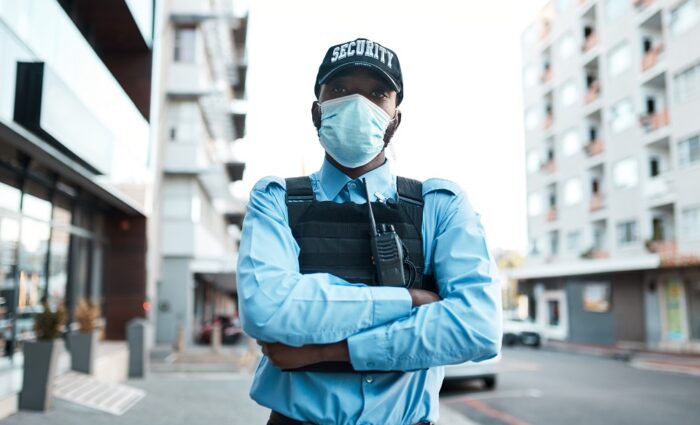Across hospitals, hotels, landscaped campuses and secured facilities, security is not just about locks and cameras. It is about creating environments where people feel safe, welcome and cared for. Healthcare institutions, for example, face a unique challenge: they must remain open and inviting while still protecting patients, staff and high‑value assets from evolving threats. Similar dynamics play out in hospitality venues, landscaped public spaces and commercial offices—each must balance accessibility with robust protection. This article explores why integrated safety measures are essential, what they include and how Lemontree combines technology and expertise to protect patients, guests and staff across all its divisions.
The Importance of a Comprehensive Approach
Facilities with high foot traffic—whether hospitals, resorts or corporate campuses—host diverse populations and high‑value assets. In healthcare settings, tensions can run high because patients, family members and busy professionals share the same spaces. Assets such as medical equipment and controlled substances require stringent protection, and confidential records must be kept secure. Hospitals operate 24/7, so security must adapt to fluctuating staffing levels and visitor traffic.
These complexities aren’t limited to healthcare. Hotels must protect guests, staff and property while maintaining a pleasant ambience. Landscaped grounds and corporate campuses need to remain accessible yet safe for visitors and employees. Without a cohesive security strategy, vulnerabilities multiply: unauthorized access, theft, violence, data breaches, emergency preparedness gaps, insider threats and even technological vulnerabilities from IoT devices. A layered, integrated approach helps mitigate these risks while supporting daily operations.
Building Blocks of Integrated Security
A comprehensive security ecosystem combines physical and digital measures to address different vulnerabilities. Key components include:
- Advanced Access Control – Modern systems regulate entry based on roles and permissions. They use biometric authentication for high‑security zones, smart cards or mobile credentials for staff and authorized visitors, visitor management software for tracking guests, and integration with HR databases for automatic updates. Audit trails support compliance and investigations.
- Intelligent Video Surveillance – High‑resolution cameras paired with analytics detect unusual behavior, recognize objects and alert staff to anomalies. Integration with access control allows security teams to verify events quickly, while privacy masking ensures compliance with regulations.
- Intrusion Detection & Alarm Systems – Perimeter sensors, glass‑break detectors and panic buttons protect facilities during off‑hours or in restricted areas. These systems tie into video and access control to trigger rapid responses.
- Asset Tracking & Management – RFID tags and real‑time location systems safeguard high‑value assets and controlled substances, integrating with access control to monitor movement and alert staff to unauthorized removal.
- Emergency Communications – Mass notification systems, intercoms and mobile apps enable rapid, targeted alerts during emergencies. Integration with local emergency services supports coordinated responses.
- Cybersecurity Measures – Network segmentation, encryption, vulnerability testing and staff training protect digital infrastructure. As physical and digital security converge, these measures are essential to safeguard patient data and operational systems.
- Environmental Monitoring – Sensors track temperature and humidity to protect equipment and critical storage areas. Integration with building management systems triggers automated climate control and alerts when conditions deviate.
Layering these elements ensures that if one control fails, others continue to protect patients, guests and staff. Integrated security operations centers (SOCs) can manage both physical and cyber threats from a single platform, providing a unified view of risks and coordinated response.
Benefits Across Lemontree’s Divisions
- Healthcare – In hospitals and clinics, integrated security supports open access for patients and visitors while controlling entry to sensitive areas like operating rooms and pharmacies. Advanced access control prevents unauthorized entry, video surveillance with AI helps detect aggressive behavior or potential threats, and asset tracking safeguards expensive equipment and medication. During emergencies, mass notification systems speed up responses and protect both staff and patients.
- Hotels & Resorts – Hospitality venues must balance guest experience with safety. Integrated access control allows guests to enter rooms and amenities seamlessly while restricting unauthorized movement. Video analytics help detect suspicious activity, monitor entrances and exits, and ensure staff compliance with procedures. Panic buttons and duress alarms provide staff with quick assistance during incidents, improving response times.
- Landscaping & Facilities – Landscaped campuses, parks and corporate grounds attract visitors, employees and contractors. Environmental monitoring ensures that outdoor areas remain safe and comfortable. Integrated surveillance and intrusion detection protect equipment and manage perimeters, while visitor management systems track contractors and vendors. Real‑time location tracking can help locate equipment quickly and deter theft.
- Security Services – The dedicated security division ties all these measures together. SOCs centralize monitoring and enable coordination across multiple sites. Physical guards supported by real‑time data can respond to incidents more effectively. Robust cybersecurity practices protect the digital infrastructure underlying access control and surveillance systems.
Leveraging Technology and Innovation
Modern technology enables more intelligent and proactive security measures:
- Artificial Intelligence & Machine Learning – AI algorithms identify suspicious patterns and predict potential risks. Automated incident classification helps prioritize responses and reduce alarm fatigue.
- Internet of Things (IoT) Integration – Connecting devices and sensors creates a comprehensive network where systems share information. Real‑time data aggregation improves situational awareness, and automated responses can lock down areas or alert staff when specific triggers occur.
- Cloud‑Based Management – Cloud platforms allow centralized control of multi‑site security, real‑time updates and advanced analytics. Off‑site storage protects critical data from physical damage or tampering.
- Biometric and Contactless Access – Multi‑factor authentication combining biometrics with credentials enhances security, while contactless options support hygiene in healthcare settings.
- Drones, Robotics & AR/VR – Drones can perform perimeter patrols or deliver supplies in emergencies. Autonomous robots handle repetitive tasks like monitoring or disinfection. Virtual reality provides immersive training for security personnel.
By adopting these innovations judiciously, Lemontree enhances safety while supporting operational efficiency.
Collaboration, Training and Culture
Integrated technology is only part of the solution. Security involves people, processes and culture:
- Risk Assessments & Tailored Planning – Each facility has unique challenges. Thorough risk assessments identify vulnerabilities and inform customized solutions.
- Staff Training & De‑Escalation – Security personnel and frontline staff need training in emergency procedures, de‑escalation techniques and mental‑health first aid. Regular drills improve readiness and coordination.
- Policies & Compliance – Robust protocols for visitor management, asset handling and data privacy ensure adherence to regulations such as HIPAA. Continuous evaluation and updates maintain compliance and adapt to new threats.
- Culture of Vigilance – Security is everyone’s responsibility. Encouraging employees to report unusual behavior and fostering a culture of awareness strengthen overall protection.
Conclusion: A Holistic Path to Safety
Security is no longer confined to locks and guards. To protect patients, guests and staff in today’s complex environments, organizations need integrated strategies that combine technology, processes and people. By unifying access control, surveillance, intrusion detection, emergency communication and cybersecurity, Lemontree creates secure environments that remain welcoming and efficient. Layered security addresses vulnerabilities such as unauthorized access, theft, violence, data breaches, and emergencies, while advanced technologies enhance responsiveness and resilience.
In healthcare facilities, hotels and resorts, landscaped campuses and corporate offices, comprehensive security strategies safeguard those we serve. They also support operational excellence, promote trust and ensure compliance. At Lemontree, we believe safety is the foundation of great experiences—whether you’re healing, visiting, working or relaxing. With integrated measures and continuous innovation, we turn security challenges into opportunities for excellence.




